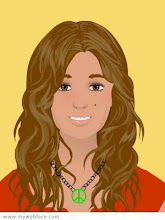
Where are these people that have these “Aryan” views? I was highly disturbed by many thoughts in PJ Tobia’s article. To be perfectly honest I never realized there were such opposite opinions regarding multiculturalism. It doesn’t seem like it should be this complicated of a debate. In my mind, multiculturalism simply means respecting others people’s beliefs and cultures. You don’t have to believe what they believe and you certainly don’t have to agree with it. However, you do need to accept the fact that they can have their own opinion.
"Be who you are and say what you feel, because those who mind don't matter, and those who matter, don't mind."
— Dr. Seuss
It is very easy for people to cross a line when they are arguing equality. For instance, I think the minority quotas in work places have gotten out of control. In theory it sounds like a wonderful idea. You have to have a certain number represented of every demographic to ensure equality in the workplace. But if you have already filled you “Hispanic” quota does that mean no one else with a Hispanic background can get a job even if they are more qualified than the other applicants? Why does it even come down to race? I thought the point of equal opportunity America was that everyone had an equal opportunity REGARDLESS of their color not BECAUSE of it. Why is financial aid based on your ethnic background more than financial NEED?
"Be who you are and say what you feel, because those who mind don't matter, and those who matter, don't mind."
— Dr. Seuss
It is very easy for people to cross a line when they are arguing equality. For instance, I think the minority quotas in work places have gotten out of control. In theory it sounds like a wonderful idea. You have to have a certain number represented of every demographic to ensure equality in the workplace. But if you have already filled you “Hispanic” quota does that mean no one else with a Hispanic background can get a job even if they are more qualified than the other applicants? Why does it even come down to race? I thought the point of equal opportunity America was that everyone had an equal opportunity REGARDLESS of their color not BECAUSE of it. Why is financial aid based on your ethnic background more than financial NEED?
When it come to education, I just do not see how discussing and learning about different cultures could possibly have a negative effect. No one is saying rewrite all the history books and offer a different curriculum for each ethnic group, because that is unrealistic and Samuel Taylor’s article. However, why can’t we bring in books, movies, and speakers from different backgrounds to teach us about where they come from? What makes some people think they have nothing to learn from anyone different from themselves? I recently read Inside Separate Worlds by David Schoem for another class and I think that Sherri Campbell said it best when she wrote, “A white person in America who does not associate with other races will never know how others feel and, in effect, will deprive himself of education” (Schoem, p.126).



